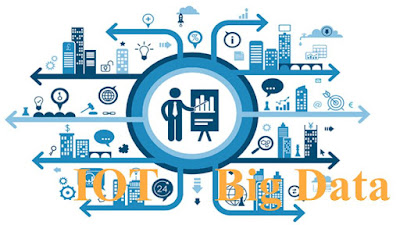Data Analysis Vs. Data Science
Data analysis and data science are two related but distinct fields in the data industry. While both involve working with data, they differ in terms of their scope, methodology, and goals. Here's a breakdown of the key differences between data analysis and data science.
Data Analysis:
To become proficient in data analysis, many individuals pursue data science training courses that provide a foundation in statistical techniques and data manipulation tools. These courses cover topics such as data cleaning, data transformation, and exploratory data analysis, which are essential skills for any data analyst. They also provide an introduction to statistical methods such as regression analysis, hypothesis testing, and data visualization, which are used to draw insights and make informed decisions. Data science training courses may be offered in-person or online, and they often require hands-on practice with real-world data sets to develop practical skills. By completing a data science training course, individuals can gain the skills and knowledge necessary to perform data analysis and make meaningful contributions to their organizations.
Data Science:
Data science courses and training programs recognize the interdisciplinary nature of data science, which combines statistics, computer science, and domain expertise. As a result, data science requires a diverse set of skills and knowledge to extract insights from data and develop predictive models. Data scientists use various techniques and technologies, including machine learning algorithms, statistical models, and other advanced methods to create insights and generate predictive models.
To become a data scientist, individuals may choose to enroll in data science training programs that offer a comprehensive curriculum in statistics, computer science, and other relevant fields. These programs can provide hands-on experience with data analysis tools, programming languages, and machine learning algorithms. Additionally, some data science courses may offer opportunities for students to work on real-world projects, providing practical experience in applying data science techniques to real-world problems.
The Main Differences:
The field of data science has gained significant attention in recent years, with many individuals seeking data science certification to gain expertise in the field. Data science involves the use of statistical and computational methods to extract insights from data and create predictive models. It encompasses a broad range of skills and techniques, including data mining, machine learning, and predictive analytics. In contrast, data analysis is typically more focused on understanding the data and using it to support decision-making. While both fields involve working with data, data science requires a deeper level of expertise in statistical analysis and programming languages such as Python and R, which is often acquired through formal education or data science certification programs.
To become proficient in the tools and techniques used in data science, individuals can pursue a specialized data scientist course that covers advanced topics such as deep learning, neural networks, and big data technologies like Hadoop and Spark. These courses provide hands-on training in the latest tools and techniques used by data scientists, including cloud computing platforms and distributed computing systems. In contrast, data analysts typically rely on tools such as spreadsheets, SQL databases, and statistical software like R or Python. While data analysts may also use visualization tools like Tableau or Power BI to create reports and communicate insights, they may not require the same level of proficiency in advanced tools and technologies as data scientists. Overall, the tools and techniques used in data analysis and data science reflect the different goals and methodologies of each field, and individuals looking to advance their careers in either field can benefit from pursuing a specialized data scientist course or training program.
To gain the necessary domain expertise and knowledge of statistical techniques required for data science, many individuals turn to data science institutes or other educational programs. These institutes offer specialized training in areas such as statistics, machine learning, data visualization, and programming languages like Python and R. By completing a data science certification or attending a data science institute, individuals can acquire the skills and knowledge necessary to extract insights from data and build predictive models. In contrast, data analysts may not require the same level of formal training as data scientists, but they still need to be proficient in tools such as Excel, SQL, and Tableau to manipulate and visualize data effectively. Overall, while there is some overlap between the fields of data analysis and data science, the latter requires a more specialized skill set and deeper level of expertise, which can be obtained through formal education and training programs such as data science institutes.
Why is Python Essential for Data Analysis and Data Science
Python is an essential tool for both data analysis and data science due to its simplicity, versatility, and powerful libraries. Here are some reasons why Python is essential for both fields:
Simple and easy to learn: Python has a clean and straightforward syntax, making it an accessible programming language for beginners. Its readability and ease-of-use make it a favorite among data analysts and data scientists, even for those without a computer science background.
Powerful libraries: Python has a vast array of libraries dedicated to data analysis and machine learning, including NumPy, Pandas, Scikit-learn, TensorFlow, and Keras. These libraries provide tools and functions for various data processing tasks, data visualization, and modeling.
Flexibility and versatility: Python's flexibility and versatility make it an ideal tool for data science and data analysis. It can be used for everything from data cleaning and data manipulation to developing complex machine learning algorithms.
Open-source and free: Python is an open-source language, meaning that anyone can use, modify and distribute it for free. This means that anyone, regardless of their budget, can access and utilize Python for data analysis or data science.
Community support: Python has a massive community of users who share knowledge and offer support through forums, social media, and other channels. This community has developed many resources and libraries, making it easier for users to solve problems and create efficient solutions.
Refer to these articles:
Conclusion
To gain proficiency in using Python for data analysis and data science, individuals can pursue training through the best data science courses and data science training institutes. These programs provide hands-on training in using Python to manipulate, analyze, and visualize data, as well as building machine learning models and developing predictive solutions. Python's simplicity, versatility, and powerful libraries make it an essential tool for data analysts and data scientists to efficiently process and analyze data. Additionally, the large and active Python community provides a wealth of resources and support for individuals learning the language. As Python continues to grow in popularity in the data industry, it is increasingly becoming a crucial language to learn for anyone interested in pursuing a career in data analysis or data science. Therefore, individuals can benefit from pursuing the best data science course and data science training institute to gain expertise in using Python for data analysis and data science.
What is Box Plot - Data Science Terminologies
Statistics for Data Science


